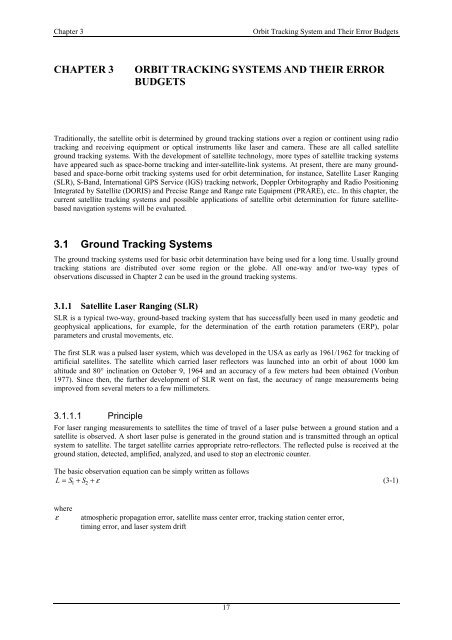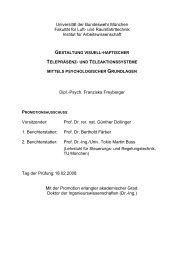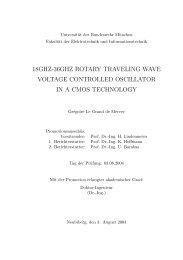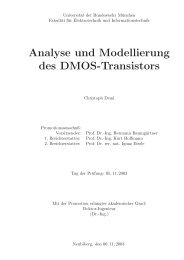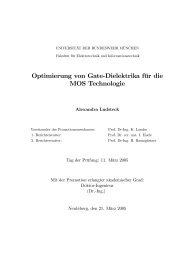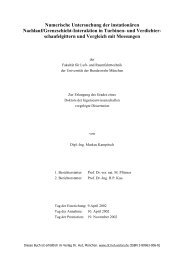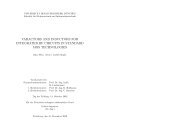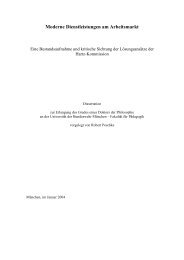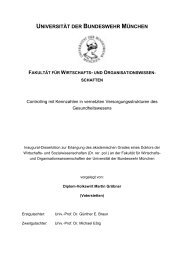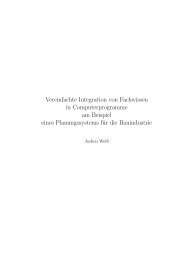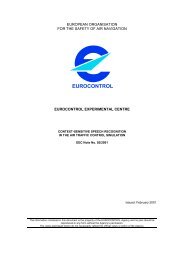Precise Orbit Determination of Global Navigation Satellite System of ...
Precise Orbit Determination of Global Navigation Satellite System of ...
Precise Orbit Determination of Global Navigation Satellite System of ...
You also want an ePaper? Increase the reach of your titles
YUMPU automatically turns print PDFs into web optimized ePapers that Google loves.
Chapter 3 <strong>Orbit</strong> Tracking <strong>System</strong> and Their Error Budgets<br />
CHAPTER 3 ORBIT TRACKING SYSTEMS AND THEIR ERROR<br />
BUDGETS<br />
Traditionally, the satellite orbit is determined by ground tracking stations over a region or continent using radio<br />
tracking and receiving equipment or optical instruments like laser and camera. These are all called satellite<br />
ground tracking systems. With the development <strong>of</strong> satellite technology, more types <strong>of</strong> satellite tracking systems<br />
have appeared such as space-borne tracking and inter-satellite-link systems. At present, there are many groundbased<br />
and space-borne orbit tracking systems used for orbit determination, for instance, <strong>Satellite</strong> Laser Ranging<br />
(SLR), S-Band, International GPS Service (IGS) tracking network, Doppler <strong>Orbit</strong>ography and Radio Positioning<br />
Integrated by <strong>Satellite</strong> (DORIS) and <strong>Precise</strong> Range and Range rate Equipment (PRARE), etc.. In this chapter, the<br />
current satellite tracking systems and possible applications <strong>of</strong> satellite orbit determination for future satellitebased<br />
navigation systems will be evaluated.<br />
3.1 Ground Tracking <strong>System</strong>s<br />
The ground tracking systems used for basic orbit determination have being used for a long time. Usually ground<br />
tracking stations are distributed over some region or the globe. All one-way and/or two-way types <strong>of</strong><br />
observations discussed in Chapter 2 can be used in the ground tracking systems.<br />
3.1.1 <strong>Satellite</strong> Laser Ranging (SLR)<br />
SLR is a typical two-way, ground-based tracking system that has successfully been used in many geodetic and<br />
geophysical applications, for example, for the determination <strong>of</strong> the earth rotation parameters (ERP), polar<br />
parameters and crustal movements, etc.<br />
The first SLR was a pulsed laser system, which was developed in the USA as early as 1961/1962 for tracking <strong>of</strong><br />
artificial satellites. The satellite which carried laser reflectors was launched into an orbit <strong>of</strong> about 1000 km<br />
altitude and 80° inclination on October 9, 1964 and an accuracy <strong>of</strong> a few meters had been obtained (Vonbun<br />
1977). Since then, the further development <strong>of</strong> SLR went on fast, the accuracy <strong>of</strong> range measurements being<br />
improved from several meters to a few millimeters.<br />
3.1.1.1 Principle<br />
For laser ranging measurements to satellites the time <strong>of</strong> travel <strong>of</strong> a laser pulse between a ground station and a<br />
satellite is observed. A short laser pulse is generated in the ground station and is transmitted through an optical<br />
system to satellite. The target satellite carries appropriate retro-reflectors. The reflected pulse is received at the<br />
ground station, detected, amplified, analyzed, and used to stop an electronic counter.<br />
The basic observation equation can be simply written as follows<br />
L = S + S +<br />
1 2 ε (3-1)<br />
where<br />
ε atmospheric propagation error, satellite mass center error, tracking station center error,<br />
timing error, and laser system drift<br />
17


